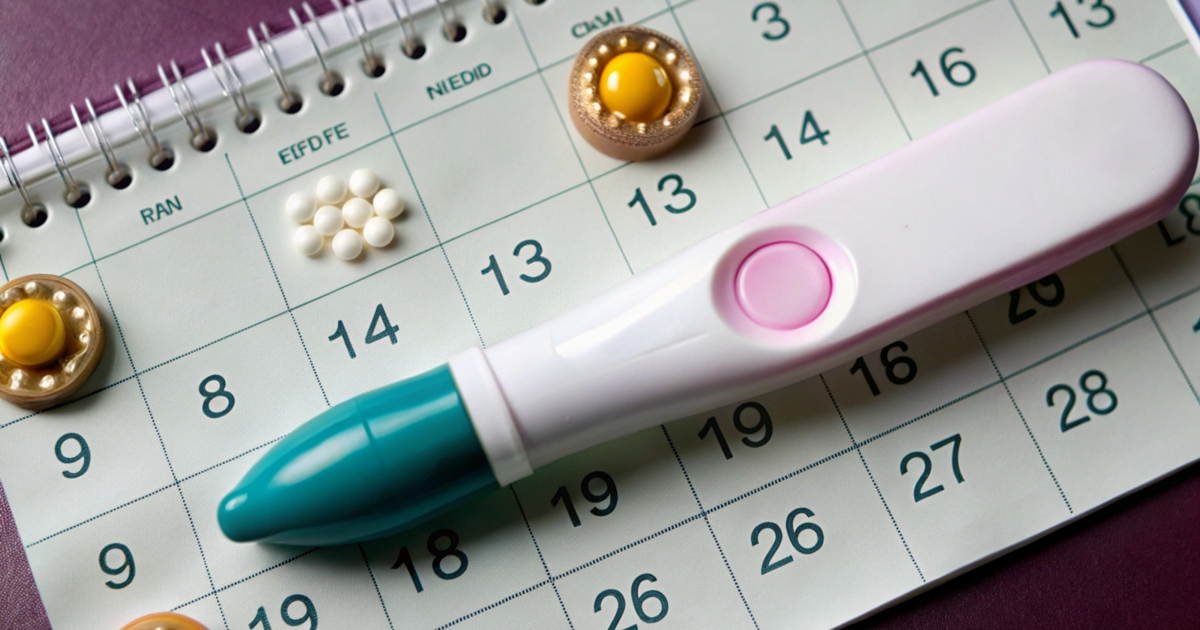Changing needs at every stage, hormonal and emotional support — follow your journey with confidence.
1st Trimester (Weeks 0–13)
From the first heartbeat to the first ultrasound…
The foundation of your pregnancy is built in this stage.
The first trimester is both the most delicate and the most exciting period. While your baby transforms from an embryo into a fetus, your body rapidly adapts to pregnancy. Hormones rise, early symptoms appear, and for the first time, you begin to truly feel: “I’m becoming a mother.”
What Happens This Trimester
- Weeks 4–5: The gestational sac and yolk sac can be seen on ultrasound.
- Weeks 6–7: The embryo develops, and the heartbeat becomes visible.
- Weeks 8–9: The limbs begin to form.
- Week 10: Organ development (organogenesis) completes.
- Weeks 11–12: Your baby is now a fetus, and external genital structures form.
Tests and Evaluations
First Visit (Weeks 5–8):
- Confirmation of pregnancy and fetal heartbeat
- Single vs. multiple pregnancy assessment
- Weight and blood pressure check
- Start of folic acid supplementation if needed
Initial Lab Tests:
- CBC, Urinalysis, Fasting Glucose, TSH, Liver and Kidney Function Tests
- HBsAg, VDRL, Rubella, Toxoplasma, CMV (TORCH panel)
11–14 Weeks:
- Nuchal translucency (NT) measurement
- Combined test (NT + maternal blood test)
- Nasal bone and bladder evaluation
- Chorionic Villus Sampling (CVS) if indicated
2nd Trimester (Weeks 14–27)
Senses awaken, the first kicks are felt, bonding begins.
This is often the most enjoyable period of pregnancy. Nausea fades, energy returns, and your belly becomes more visible. Your baby’s organs mature and senses develop — you begin to feel the first flutters of movement. Detailed ultrasound and important diagnostic screenings are done during this time.
What Happens This Trimester
- Weeks 14–16:
- Fetal genitalia are distinguishable — gender may be predicted.
- Thyroid, pancreas, and liver begin to function.
- Bones harden, muscles strengthen, and you feel more energetic.
- Weeks 17–20:
- First movements (“quickening”) are felt, especially around week 20 for first-time mothers.
- Hearing develops; your baby reacts to sound and light.
- Taste and smell begin forming.
- The uterus rises to the level of the belly button.
- Weeks 21–24:
- The skin thickens, covered by fine hair (lanugo).
- The baby swallows amniotic fluid — an early breathing exercise.
- Taste reflex develops.
- You may notice gum sensitivity, back pain, or sleep difficulties.
- Weeks 25–27:
- Brain development accelerates; the baby starts recognizing voices.
- Eyelids open and close.
- Fat begins accumulating under the skin.
- The baby recognizes the mother’s voice — emotional bonding strengthens.
Key Tests and Screenings
- 16–18 Weeks: Triple or Quadruple Screening Test (if not done earlier)
- 20–23 Weeks: Detailed anatomy ultrasound (heart, brain, kidneys, spine, stomach, limbs)
- 27–28 Weeks:
- Glucose screening (50g OGTT)
- Rh incompatibility check and Anti-D administration if needed
- Blood pressure, weight, and fetal growth monitoring
Why It’s Important: This trimester provides essential insight into your baby’s growth and helps plan a safe delivery. It’s also when emotional and physical wellbeing need closer attention.
3rd Trimester (Weeks 28–40)
Your baby grows rapidly, your body prepares for birth — the countdown begins.
The final trimester is both physically demanding and emotionally intense. Your baby now resembles a newborn, and your body prepares for delivery. Sleep disruptions and shortness of breath are common, but the excitement builds each day. Monitoring during this period ensures both mother and baby are ready for birth.
What Happens This Trimester
- Weeks 28–31:
- The baby opens its eyes and reacts to light.
- Lung development continues; breathing movements increase.
- Brain responses to sound and stimuli begin.
- Mothers may experience insomnia or heartburn.
- Weeks 32–35:
- Subcutaneous fat accumulates, smoothing the skin.
- Movements become stronger and more coordinated.
- Testes descend; external genitalia in girls become more defined.
- Pelvic pressure and swelling may occur.
- Weeks 36–40:
- The baby settles into a head-down position.
- Movements decrease in frequency but remain regular.
- Mucus plug discharge (“bloody show”) or water breaking signal approaching labor.
- Frequent urination and rhythmic contractions begin.
Key Tests and Monitoring
- 31–32 Weeks: Growth scan, blood and urine tests, preterm labor assessment
- 34–35 Weeks:
- NST (Non-Stress Test) for fetal heart and movement monitoring
- Evaluation of fetal position and cervical readiness
- Birth plan discussion (vaginal or cesarean)
- 36 Weeks and Beyond:
- Weekly or biweekly follow-ups
- Monitoring amniotic fluid, placenta, and cervical dilation
- Birth readiness counseling
Why It’s Important: The final trimester marks your transition — physically and emotionally — into motherhood. Regular check-ups, healthy routines, and emotional preparation ensure a safe and confident birth experience.
Tips:
- Track fetal movements daily — any noticeable decrease requires immediate evaluation.
- Recognize labor signs: rhythmic contractions, mucus plug discharge, or water breaking.
- Stay active with gentle walks and breathing exercises, eat balanced meals, and prioritize rest.
Schedule your prenatal consultation to monitor your baby’s wellbeing, review your birth plan, and receive personalized guidance for your final weeks of pregnancy.
Frequently Asked Questions
How Can I Tell If I’m Pregnant?
Most women visit their doctor as soon as their period is delayed. Typically, after a one-week delay, pregnancy can be detected via gynecological ultrasound. A follow-up scan a week later may be needed to confirm the pregnancy.
During early pregnancy (around 8 weeks), an additional ultrasound is often performed to check:
- The number and placement of gestational sacs
- The length of the cervix (cervical canal)
If the cervical length is shorter than 25 mm, the risk of miscarriage or preterm birth increases. In such cases, patients receive counseling — and if necessary, a cervical cerclage (stitch) is recommended after the first trimester as a preventive measure.
How Often Should I See My Doctor During Pregnancy?
Routine check-ups are typically scheduled:
- Every 4 weeks until 32 weeks,
- Every 2 weeks until 36 weeks,
- And weekly during the last month.
If needed, the frequency may increase in the early or late stages. These visits include both routine check-ups and specific prenatal screenings.
What Is Toxoplasmosis?
Toxoplasmosis is an infection transmitted through undercooked meat or cat feces. It can also spread by eating unwashed fruits and vegetables or drinking contaminated water.
If contracted during pregnancy, it can cause fetal abnormalities such as liver and spleen enlargement, hydrocephalus (fluid in the brain), or low birth weight.
Most women, however, have already been exposed and developed immunity before pregnancy. Because the risk of new infection is very low, many countries do not recommend routine toxoplasmosis screening.
How Can I Prevent Toxoplasmosis During Pregnancy?
There is no vaccine for toxoplasmosis, but simple hygiene measures reduce the risk:
- Always cook meat thoroughly; avoid raw or undercooked meat.
- Wash hands thoroughly with soap after handling raw meat.
- Peel or wash fruits and vegetables carefully before eating.
- Avoid contact with areas contaminated by cat feces.
- Cat owners should wear gloves when cleaning litter boxes.
What Is CMV (Cytomegalovirus)?
CMV is a viral infection similar to the flu. Contracting CMV during pregnancy can cause serious birth defects.
However, most adults in Türkiye are already immune, meaning they have previously been infected and are resistant to reinfection.
Is Rubella (German Measles) Screening Necessary?
Rubella is a childhood infection spread through respiratory droplets. About 95% of the population has immunity from childhood exposure.
Immunity can be checked easily with a blood test.
If the expectant mother is not immune, vaccination is recommended before pregnancy — but not during, since it’s a live vaccine.
If rubella is contracted in early pregnancy, it can cause serious fetal abnormalities (heart, eye, and liver defects). After vaccination, it is advised to avoid conception for at least one month.
Why Is Syphilis (VDRL) Screening Important?
Untreated syphilis during pregnancy can lead to miscarriage, preterm birth, or neonatal jaundice. It may also cause liver enlargement and affect the baby’s eyes, brain, and bones.
Therefore, testing before pregnancy and treating positive cases is essential.
Women at higher risk include those with:
- Multiple sexual partners,
- Low socioeconomic status,
- Drug use or HIV infection.
Why Is Hepatitis B Screening Recommended Before Pregnancy?
Around 10% of pregnant women are Hepatitis B carriers. While the infection doesn’t harm the fetus during pregnancy, it can be transmitted at birth.
Babies born to carrier mothers must receive both the Hepatitis B vaccine and protective immunoglobulin (HBIG) immediately after birth to prevent lifelong infection.
For this reason, Hepatitis B screening is essential before or during pregnancy.
Is Thyroid Function Testing Necessary?
Yes. If it hasn’t been done before pregnancy, a thyroid hormone test is strongly recommended.
Even a single screening helps detect thyroid dysfunction or goiter, which can cause complications during pregnancy.
How Should I Care for My Oral and Dental Health During Pregnancy?
Pregnancy increases the need for enhanced oral hygiene due to hormonal and dietary changes.
Recommendations:
- Brush your teeth at least twice daily.
- Use dental floss or interdental brushes regularly.
- Use fluoride mouthwash as advised by your dentist to prevent cavities and plaque.
- Rinse your mouth with water after vomiting (common in early pregnancy).
- Ask your dentist about topical fluoride applications if you are at high risk for cavities.
- Avoid sticky, sugary snacks between meals — if consumed, brush again afterward.
- Eat a balanced diet rich in:
- Protein
- Vitamin A (meat, milk, eggs, yellow fruits and vegetables)
- Vitamin C (citrus, tomatoes, strawberries)
- Vitamin D (meat, milk, eggs, fish)
- Calcium (dairy products, green leafy vegetables)
- Visit your dentist during the second trimester (months 4–6) for a full check-up.
Maintaining oral health supports both maternal wellbeing and fetal development throughout pregnancy.

